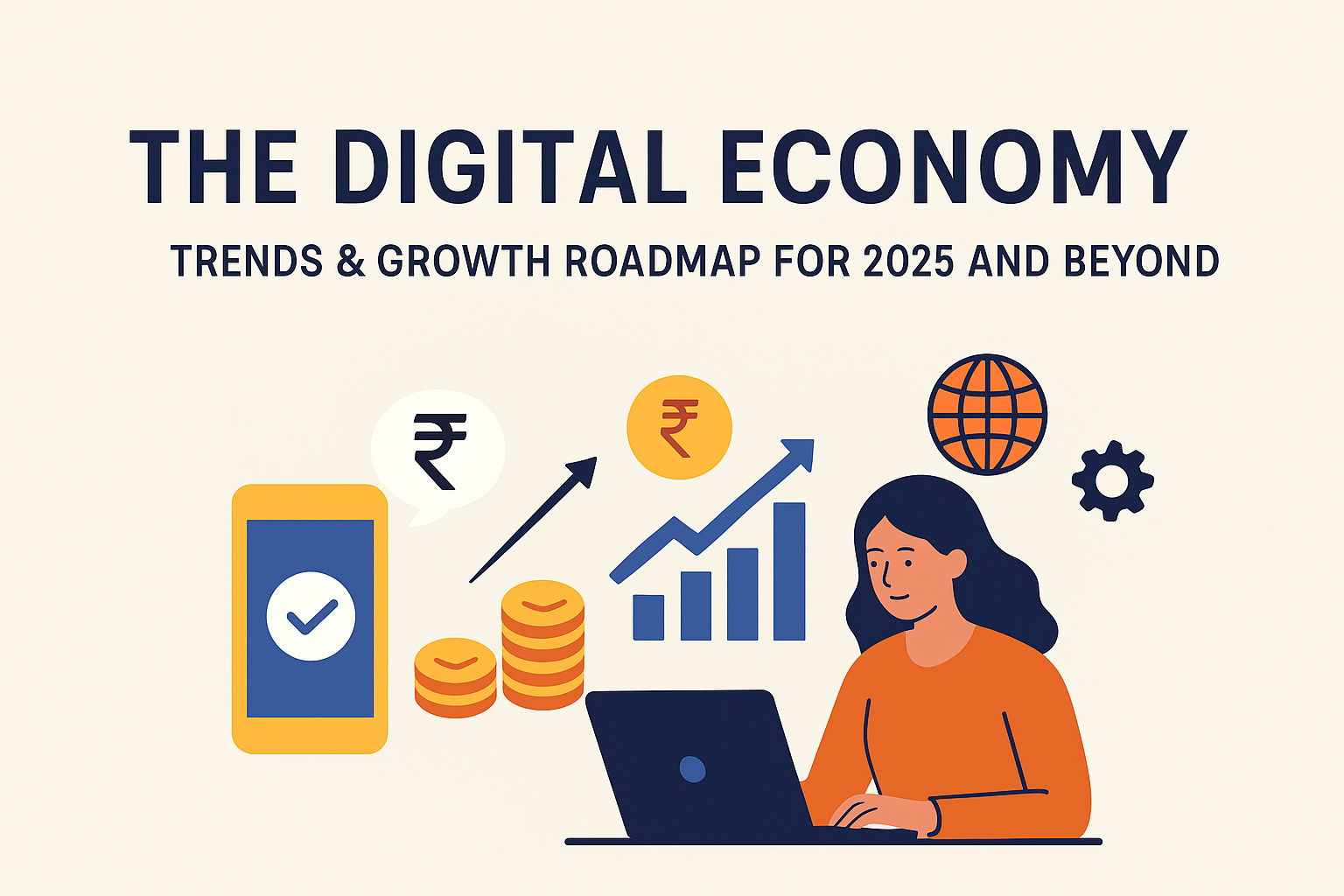The Digital Economy: Trends & Growth Roadmap for 2025 and Beyond
Imagine walking into a shop without pulling out your wallet, only to realize your face just made the payment. That’s not sci-fi anymore – it’s the reality of the digital economy, and it’s transforming the way we live, work, and do business at lightning speed.
According to the IMF, the digital economy already accounts for 15.5% of global GDP, growing 2.5 times faster than the traditional economy. In India alone, the Ministry of Electronics & IT projects the digital economy to reach $1 trillion by 2030, making it one of the fastest-growing sectors in the world.
Key Digital Economy Trends in 2025
- Cashless Societies & Digital Payments
- UPI transactions in India crossed 14 billion in July 2024 alone, showing how quickly mobile-based payments are replacing cash.
- Contactless cards, biometric payments, and voice-based transactions are becoming mainstream.
- AI-Driven Commerce
- AI is projected to add $15.7 trillion to the global economy by 2030 (PwC report).
- Businesses are using AI to personalize shopping, predict demand, and automate customer service.
- Blockchain & Web3 Integration
- Beyond crypto, blockchain is securing supply chains, verifying identities, and creating decentralized marketplaces.
- Gig & Remote Work Expansion
- The gig economy is projected to grow by 17% annually with platforms enabling freelancers to work for global clients from anywhere.
- Digital Public Infrastructure (DPI)
- India’s Aadhaar + UPI + DigiLocker model is now being studied by 20+ countries to replicate seamless citizen services.
Growth Roadmap: Building the Future Digital Economy
- Strengthen Digital Infrastructure
- 5G rollout and expanding broadband to rural areas can unlock millions of new online users.
- Target: Achieve 100% internet penetration by 2030.
- Promote Digital Literacy & Skills
- By 2027, over 90% of jobs will require some level of digital skill (World Economic Forum).
- Focus on coding, cybersecurity, AI, and data analytics training.
- Secure & Inclusive Digital Finance
- Increase adoption of secure payment systems, protect against cyber fraud, and ensure access to underserved populations.
- Encourage Innovation & Startups
- Policy incentives, easier access to funding, and global partnerships will drive entrepreneurship in digital services.
India’s Digital Economy Potential
If India stays on this path, it could:
- Create 60–65 million new jobs by 2030.
- Boost SME growth by 20–30% annually via e-commerce and fintech adoption.
- Reduce rural-urban income gaps by bringing digital services to every village.
Conclusion
The digital economy is not just a tech story – it’s a human story. It’s about how small-town artisans sell globally via Instagram, farmers use blockchain to verify produce quality, and students learn AI coding from their smartphones.
The future is borderless, cashless, and limitless – and it’s already here.
Are you ready to be part of it?





